class: right, middle, my-title, title-slide # Ecosystem modelling approaches: ## What questions can we address? ### Sarah Gaichas, Sean Lucey, and Gavin Fay <br /> Northeast Fisheries Science Center and University of Massachusetts Dartmouth --- class: top, left # What is an ecosystem model? 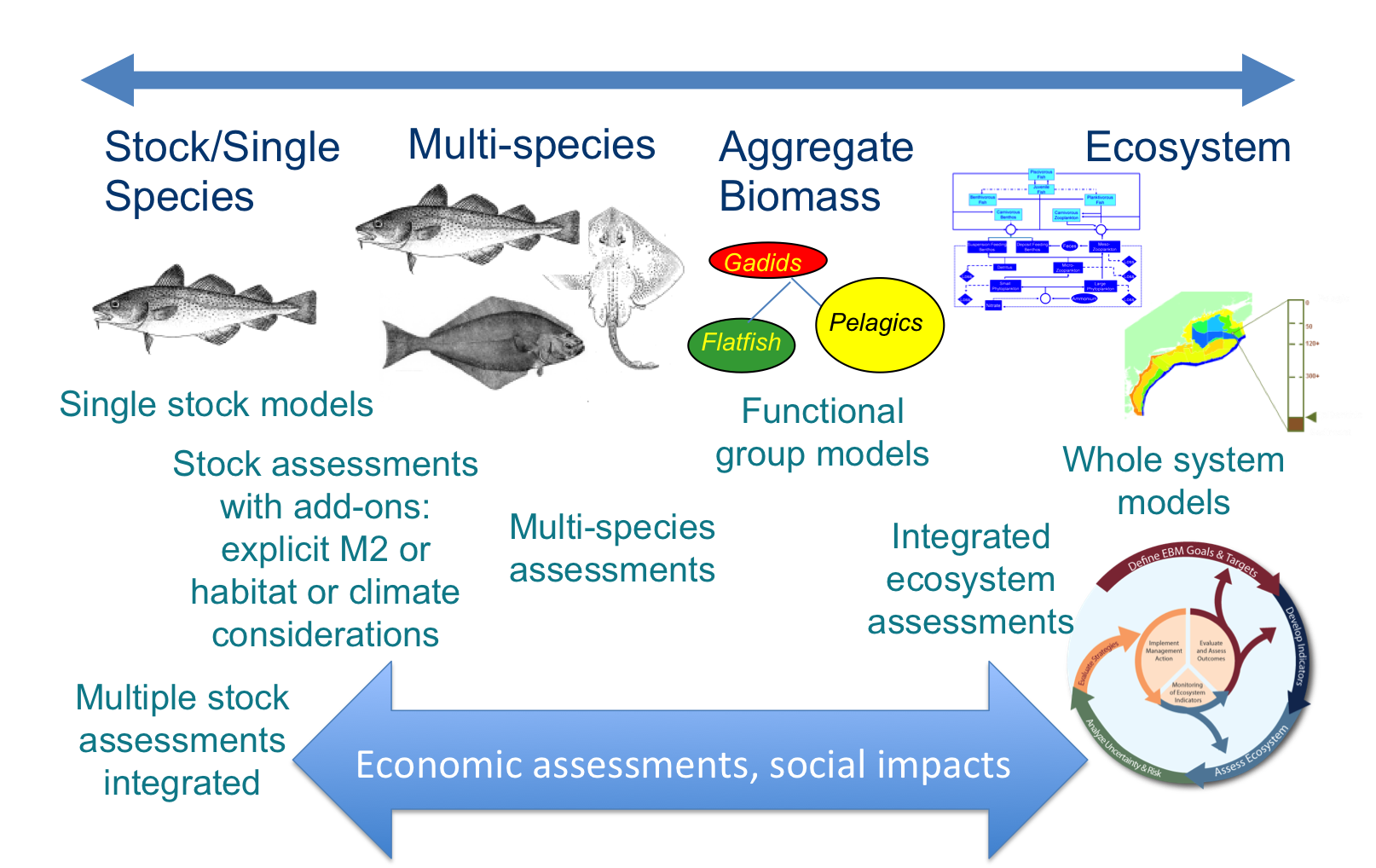 --- ## Why build one? 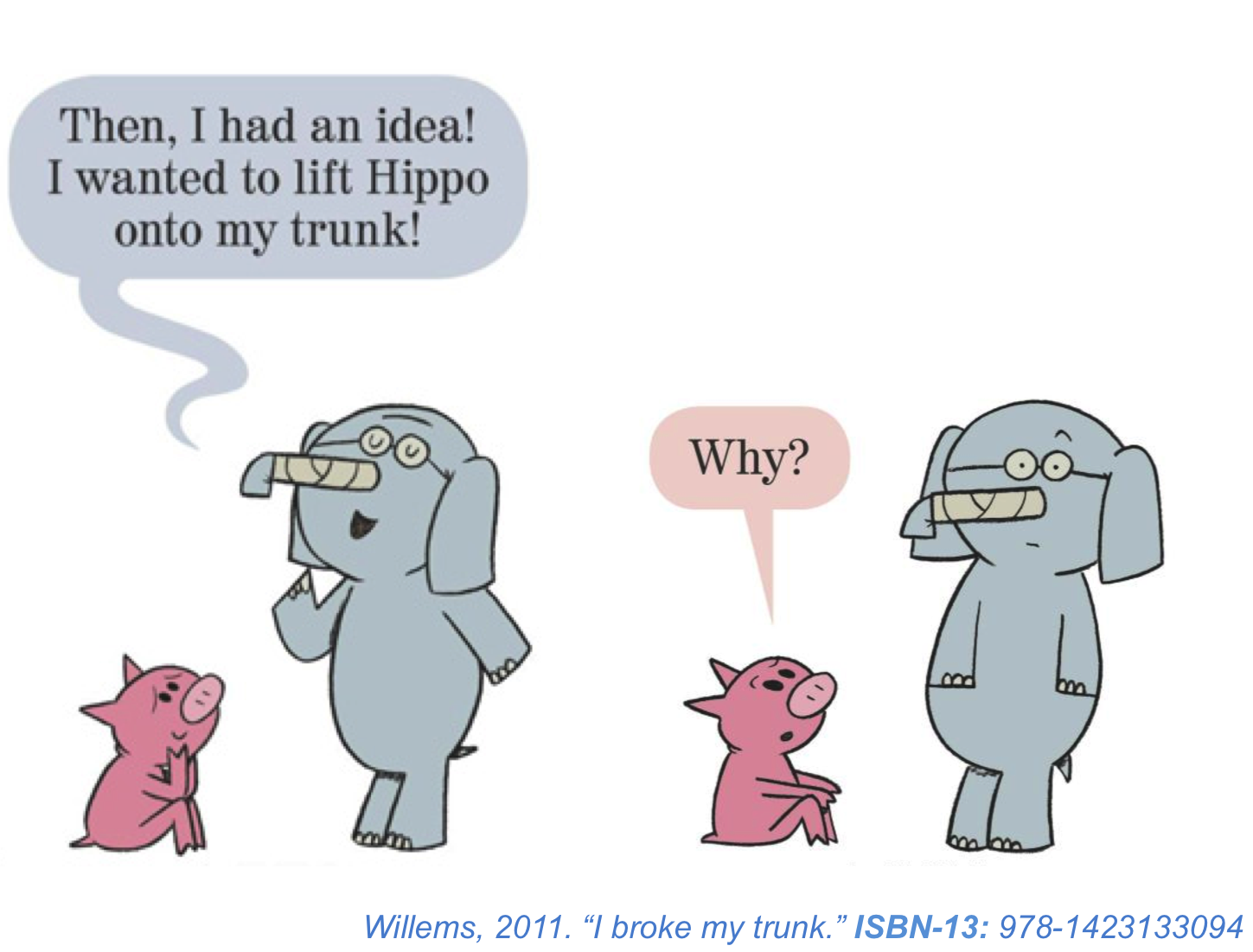 ??? --- # Suggestion: .pull-left[ 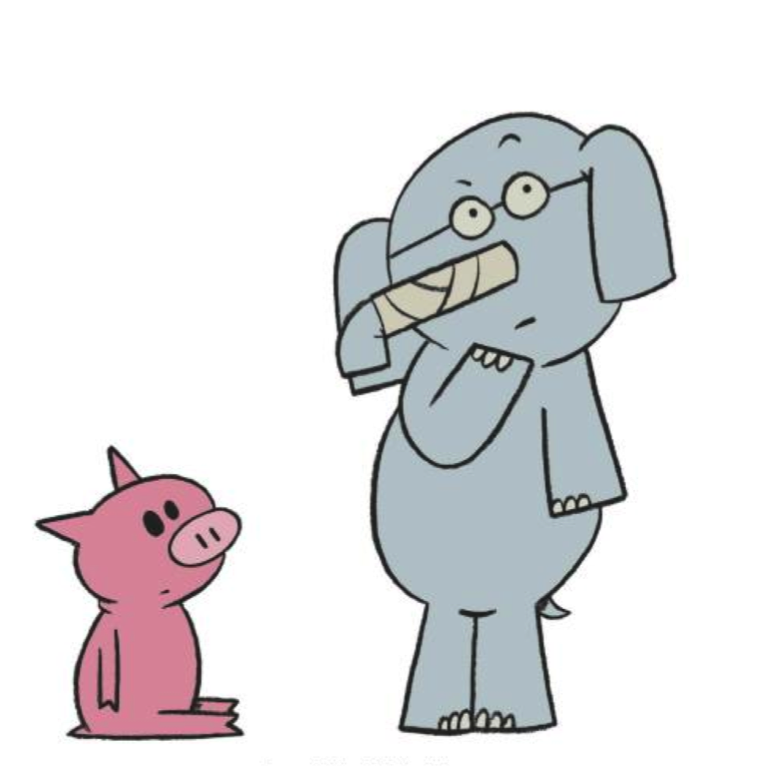 ] .pull-right[ 1. Develop clearly specified questions and objectives - What does the model have to output/predict? - What does the user need to be able to change? 1. Evaluate data availability (appropriate temporal/spatial scales) 1. THEN build a model, or better, model(s) ] --- # Today's objective Primary: Think about *your* research question - What data do you have to address it? - Would a model be useful to address your research question? - If so, what would you want it to do? - Advanced: How might you build it? Secondary: Understand what a food web model is - Know what questions to ask about how it was built - Know what it can and cannot do - Experiment: perturb the model in different ways - What do you observe? - Why might this be? (including model limitations) --- ## What is a food web model? .pull-left-60[ A system of linear equations For each group, `\(i\)`, specify: Biomass `\(B\)` [or Ecotrophic Efficiency `\(EE\)` ] Population growth rate `\(\frac{P}{B}\)` Consumption rate `\(\frac{Q}{B}\)` Diet composition `\(DC\)` Fishery catch `\(C\)` Biomass accumulation `\(BA\)` Im/emigration `\(IM\)` and `\(EM\)` Solving for `\(EE\)` [or `\(B\)` ] for each group: ] .pull-right-40[  ] `$$B_i\Big(\frac{P}{B}\Big)_i*EE_i+IM_i+BA_i=\sum_{j}\Big[ B_j\Big (\frac{Q}{B}\Big)_j*DC_{ij}\Big ]+EM_i+C_i$$` ??? Mathematically identical to an "input-output" model in economics --- ## How do you build one? Specify most parameters for each species; can solve for one .pull-left[ How? Observations from: 1. Fishery independent surveys - Biomass estimates - Diet compositions - Growth and reproduction information 1. Catch/landings/discard data from fishery managers 1. Literature, historical information, general life history theory 1. Other transparent, reproducible processes/sources ] .pull-right[  ] --- ## What can you do with one? Lab overview .pull-left[ Anchovy Bay food web model 1. Orientation using simple food web invented for illustration 1. Tradeoffs between fishing fleets targeting different species ] .pull-right[ Gulf of Maine food web model 1. More complex food web model based on a real system 1. System reaction to different scenarios 1. Changing fishing effort (combined fleet) 1. Changing mortality for individual species 1. Changing predator-prey dynamics ] ??? --- ## The Northeast US shelf food web 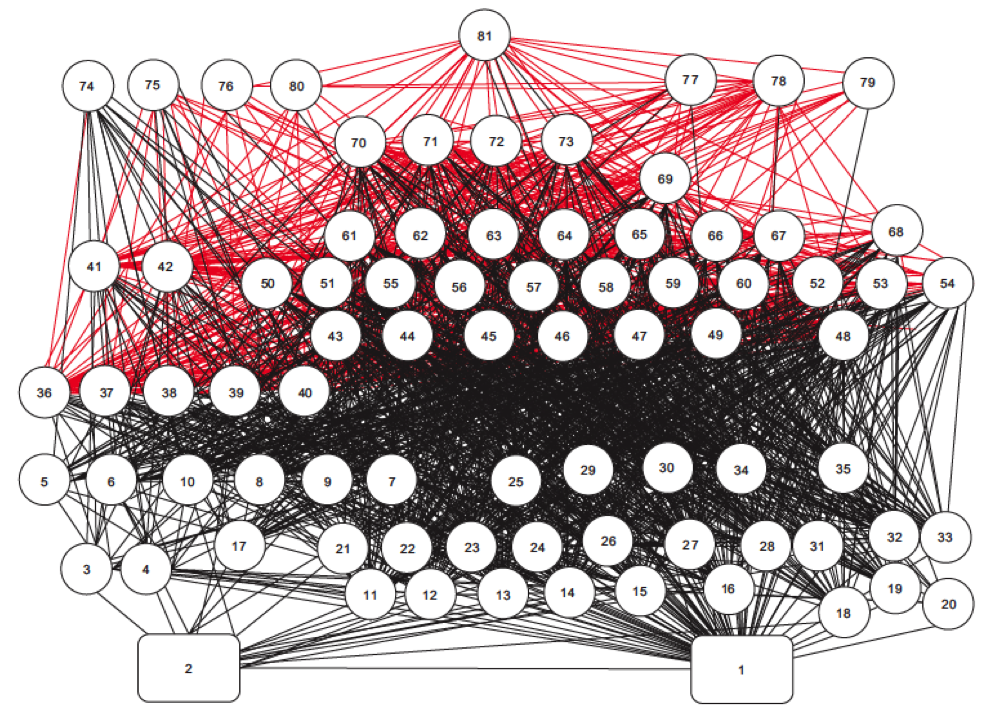 .footnote[Link, J. 2002. Does food web theory work for marine ecosystems? Marine ecology progress series, 230: 1–9.] --- ## The Gulf of Maine food web model 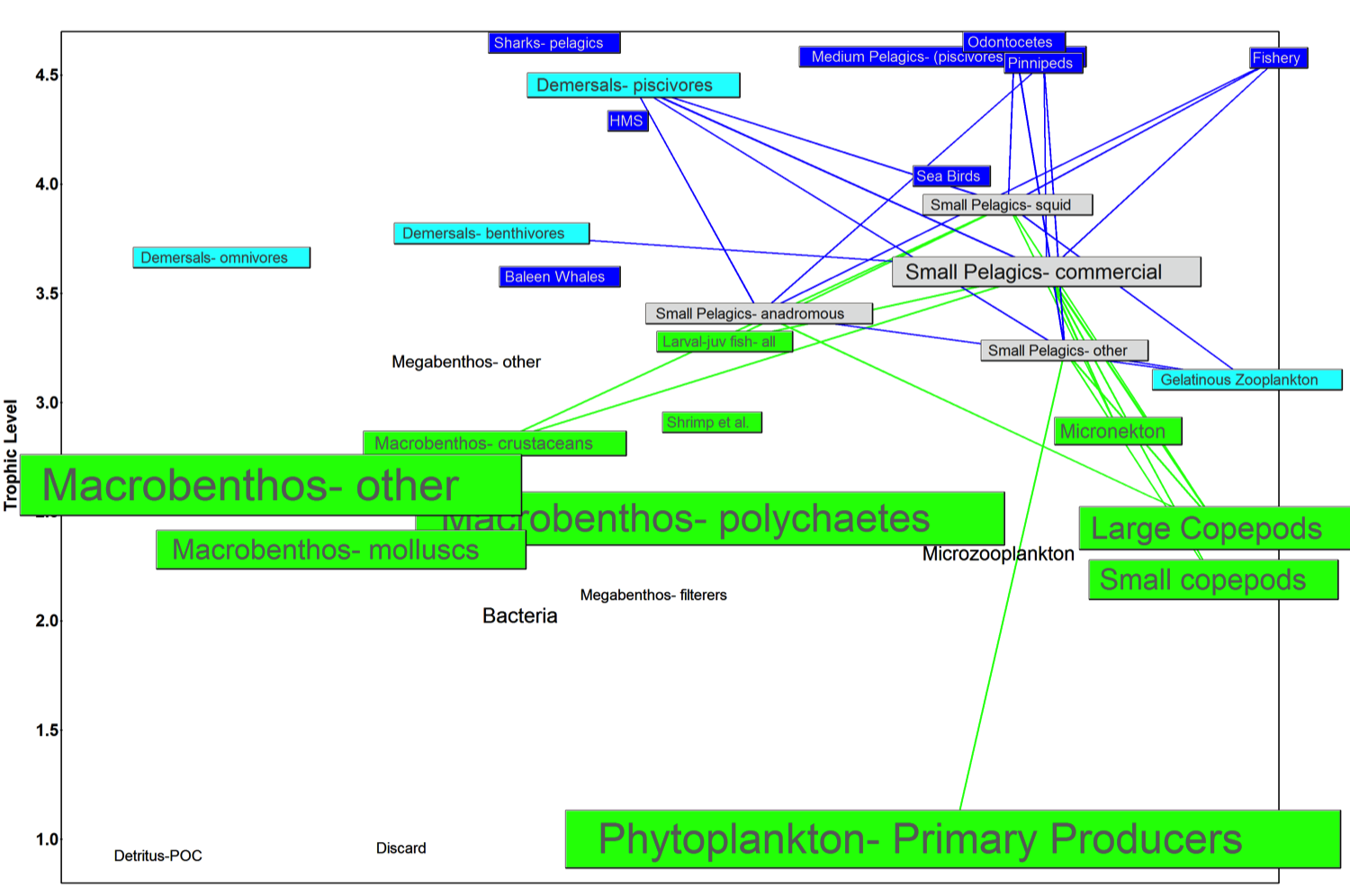 .footnote[Link, J., Overholtz, W., O’Reilly, J., Green, J., Dow, D., Palka, D., Legault, C., et al. 2008. The Northeast U.S. continental shelf Energy Modeling and Analysis exercise (EMAX): Ecological network model development and basic ecosystem metrics. Journal of Marine Systems, 74: 453–474. Link, J., Col, L., Guida, V., Dow, D., O’Reilly, J., Green, J., Overholtz, W., et al. 2009. Response of balanced network models to large-scale perturbation: Implications for evaluating the role of small pelagics in the Gulf of Maine. Ecological Modelling, 220: 351–369. ] --- ## Exercises: work in teams .pull-left[ Anchovy Bay: 1. Describe impacts of different fishing scenarios 1. Describe potential catch and biomass objectives 1. Can you engineer any scenarios to achieve them? ] .pull-right[ Gulf of Maine: 1. Describe impacts of different fishing scenarios 1. Describe impacts of individual species mortality scenarios 1. Describe impacts of "as prey" scenario 1. Can you suggest mechanisms for any observed differences? 1. What else do you need to know? Describe as a model scenario (if we have enough time, I may be able to implement) ] --- ## The next level: uncertainty How would you address this? .pull-left[ Biological parameters: 1. Biomass 1. Production rate 1. Consumption rate 1. Diet composition 1. Predator-prey interactions ] .pull-right[ Management needs: 1. Species/group resolution 1. Fishing fleet resolution 1. Spatial resolution 1. Changing stakeholder questions 1. Limited time ] --- ## External Resources * [Wikipedia: Ecosystem models](https://en.wikipedia.org/wiki/Ecosystem_model) * [Wikipedia: Ecopath](https://en.wikipedia.org/wiki/Ecopath) * [Rpath codebase](https://github.com/NOAA-EDAB/Rpath) * Slides available at https://noaa-edab.github.io/presentations --- background-image: url("EDAB_images/IMG_2733.jpg") background-size: cover ## Questions? # Thank you